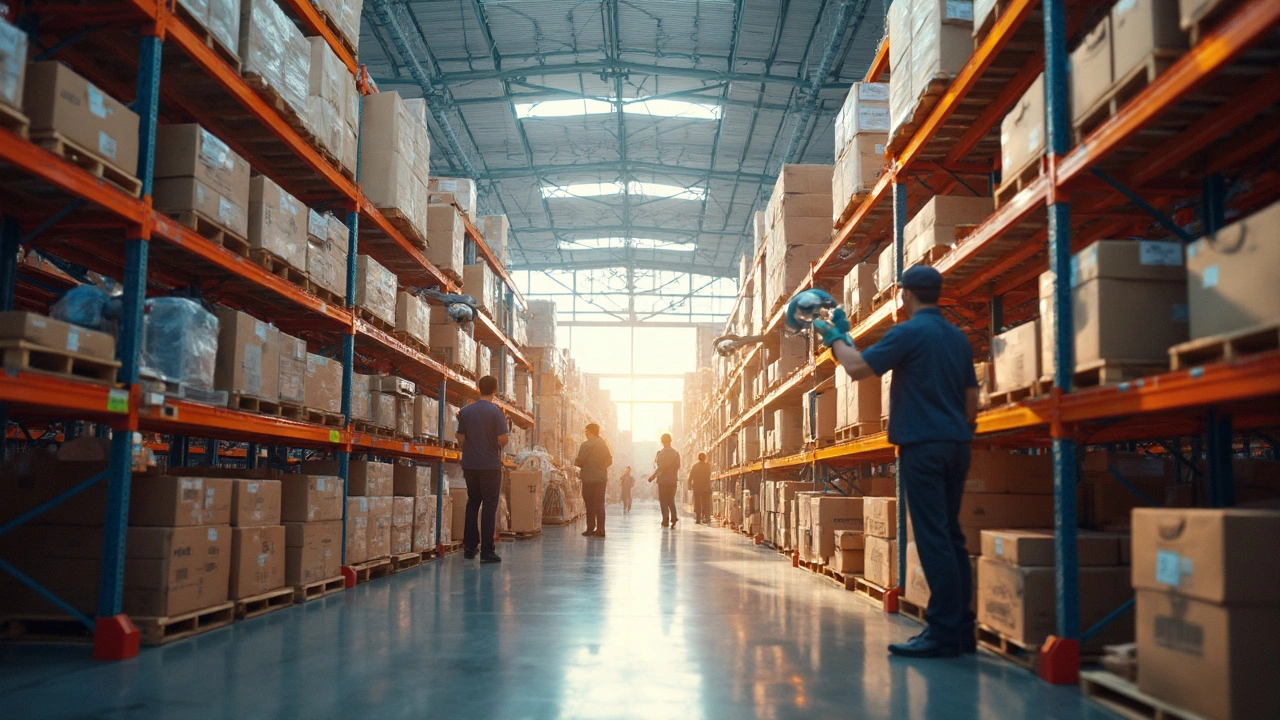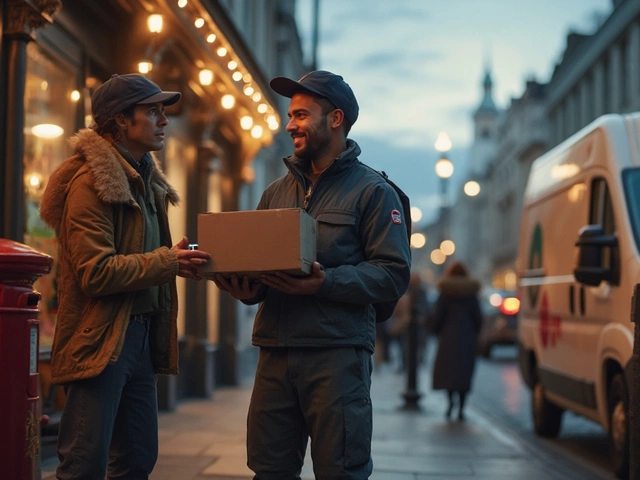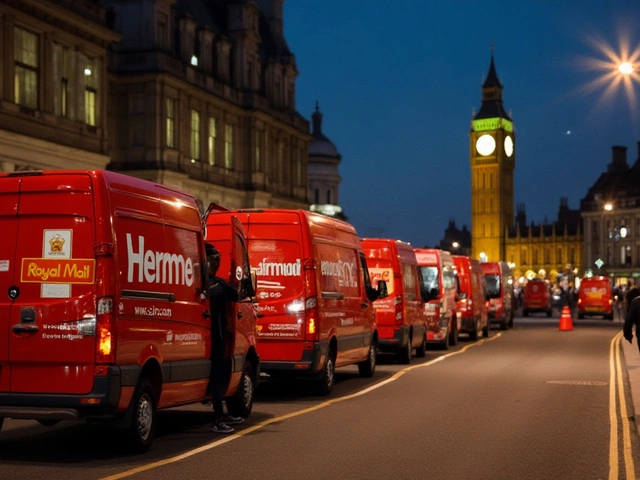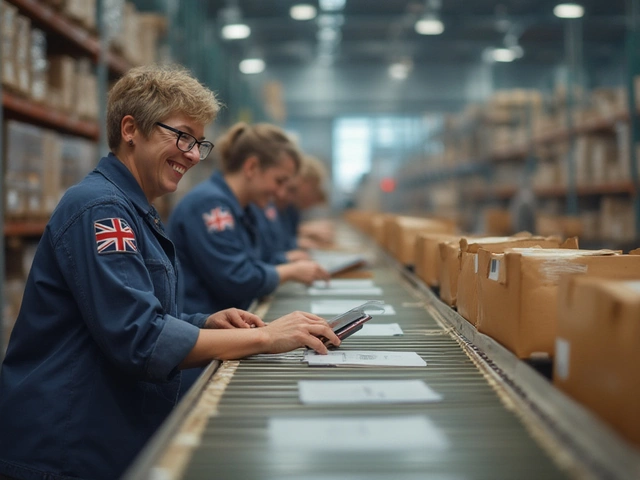Amazon doesn’t just sell everything from sweaters to smart speakers—they’ve also built arguably the most impressive logistics machine in the world. When you hit checkout and see a two-day (or sometimes same-day) delivery promise, that’s not magic. It’s a seriously connected network of warehouses, drivers, software, and even a growing fleet of airplanes working round the clock.
What makes Amazon such a powerhouse isn’t just the variety of products. It’s how they move all those packages, often faster and cheaper than anyone else. If you’ve ever tracked a package and watched it hop across states at lightning speed, you’re seeing Amazon’s logistics in action. Even smaller sellers use Amazon’s fulfillment services to tap into that lightning-fast engine, giving their products Prime delivery perks and top-notch shipping reliability.
- Why Amazon Sets the Logistics Standard
- How Amazon’s Fulfillment Network Works
- Tips for Sellers and Shoppers on Amazon
- What’s Next for E-Commerce Logistics
Why Amazon Sets the Logistics Standard
If you ask anyone who’s raised the bar in Amazon e-commerce logistics, the answer’s easy. No other company moves so many packages so quickly across the globe. As of early 2025, Amazon ships over 20 million packages every single day. Their secret sauce? A mix of huge investment in smart warehouses, tons of delivery partners, and a serious focus on technology.
Right now, Amazon operates more than 1,100 distribution and fulfillment centers worldwide. Their warehouses aren’t just big—they’re filled with robots and powered by complex software that tells workers exactly where every item is stored. When you check out, your order’s route is optimized in seconds, shaving off hours (if not days) compared to the competition.
Let’s check out some real numbers that make Amazon stand out:
| Amazon Logistics Fact | 2025 Stat |
|---|---|
| Fulfillment centers globally | 1,100+ |
| Average packages delivered per day | 20 million |
| Prime eligible items (U.S.) | Over 200 million |
| Registered drivers (“Flex” program) | 300,000+ |
Amazon also builds its own delivery network, separate from regular carriers like UPS or FedEx. Over 70% of Amazon’s U.S. package deliveries in 2025 are handled by their own drivers or partners, which cuts down costs and lets them control the timing down to the hour. If you’ve seen entire neighborhoods with Amazon vans rolling through every 10 minutes, that’s why.
To keep shoppers coming back, Amazon pushes delivery speeds that used to sound impossible. Almost two-thirds of urban Amazon Prime members now have access to same-day delivery. The company experiments with things like drone drop-offs and even sidewalk robots in select U.S. cities. None of this happens by accident—their logistics system is always evolving, with a focus on getting your stuff to you faster, more accurately, and at lower cost.
There’s a reason other retailers keep tweaking their own supply chains: because Amazon’s raised everyone’s expectations for what online shopping should feel like. That drive to deliver faster and better is why Amazon keeps setting the standard in e-commerce logistics.
How Amazon’s Fulfillment Network Works
Amazon’s fulfillment system is the backbone of their whole operation. When you order something with the Prime badge, it’s shipped out through a network that blends technology and sheer human force. Think of it like a relay race—packages pass through a chain of steps designed to be as quick as possible.
First off, there are more than 175 fulfillment centers around the globe. These are super-sized warehouses where products from third-party sellers and Amazon itself are stored. Goods are sorted, stacked on shelves, and tracked with scanners using a system that knows exactly where everything is—down to the last phone charger.
Once you hit ‘buy,’ Amazon runs algorithms to pick the closest warehouse that has your item. Workers (and robots) pick the products, scan them, and move them to packing stations where they’re boxed up. This all happens in minutes, not hours.
Amazon uses its own delivery drivers for the “last mile” in many areas with Amazon Logistics, alongside big shippers like UPS and FedEx in others. In busy cities, you might even get your package from an independent driver using the Amazon Flex app, kind of like ride-sharing but for parcels.
- Inventory is stored close to major cities to cut down delivery times.
- Some warehouses focus on specific products—like books or electronics—for faster sorting.
- Amazon’s robots don’t just carry shelves; they help reduce errors, slash labor time, and boost safety.
- Every step of the way, tracking updates zap straight to your account, giving you almost real-time updates.
The sheer scale and tech behind the Amazon network make it almost impossible for other retailers to match their shipping speed and accuracy. For sellers, signing up for Fulfillment by Amazon (FBA) can instantly level up their game, since their items automatically become Prime-eligible and get handled by this exact system.

Tips for Sellers and Shoppers on Amazon
Let’s face it—whether you’re selling or buying, Amazon has its own set of tricks you’ll want to know. For sellers, jumping in might seem easy, but getting your products seen (and shipped fast) is a whole other ball game. For shoppers, there are ways to cut costs and get your stuff quicker.
If you sell on Amazon, Fulfillment by Amazon (FBA) is the game-changer. Over 85% of the top 10,000 sellers use FBA to store, pack, and ship products. With FBA, your listings get that famous Prime badge, which means more eyeballs and extra trust from buyers. Plus, you skip the shipping headaches—Amazon handles returns and customer service too.
But here’s a reality check: competition is fierce. Thousands of sellers launch new products every day. To stand out, you’ll want strong product photos, competitive pricing, and good reviews. And don’t ignore keywords—using the right ones increases your chances of landing in top search results.
- Amazon offers data tools like Seller Central’s Business Reports. Check these numbers to see which items are moving and which need work.
- Keep your inventory updated. Running out of stock can drop your ranking overnight.
- If you qualify for Amazon’s Subscribe & Save, you can secure loyal customers who keep coming back.
Shoppers, there’s more to snagging the best deals than just waiting for Prime Day. Look for Lightning Deals and daily offers on the Today’s Deals page. If you’re not already a Prime member, students and certain cardholders can score big discounts on membership. Use filters like "Ships from and sold by Amazon" for reliable shipping and returns.
Here’s a money tip: if you add an item to your cart, sometimes prices drop after a few days. No rush? Wait it out for a possible deal. And always compare prices with reputable sellers; some third-party offers look good, but can have higher shipping fees.
“Amazon’s FBA system changed the logistics game for small businesses and solo entrepreneurs,” says Neil Ackerman, former Global Director at Amazon Fulfillment. “It’s all about plugging into a massive network—one that helps sellers supercharge growth and reach new customers overnight.”
Here’s a quick look at FBA fee averages versus shipping on your own:
| Fulfillment Option | Avg. Fee Per Unit (USD) | Prime Badge | Amazon Customer Service |
|---|---|---|---|
| FBA | $3.50 | Yes | Yes |
| Seller Fulfilled | $2.50 | No | No |
Sellers, factor these costs into your prices. Usually, FBA’s reach pays for itself in better sales. Shoppers, look for that Prime badge—faster shipping and easier returns make a difference, especially if you’re ordering gifts or fragile stuff.
What’s Next for E-Commerce Logistics
The way packages get delivered is getting faster, smarter, and maybe even a little bit weirder. Robots and automation are popping up all over warehouses, and the talk of delivery drones buzzing through neighborhoods is starting to actually happen in a few U.S. cities. Amazon itself is piloting drone deliveries and rolling out robotic systems for picking and packing orders, making sure things move at top speed with fewer mistakes.
A big trend right now is same-day or one-day delivery. According to data from Statista, about 41% of shoppers in the U.S. expect their online orders to arrive in two days or less, and most top e-commerce players are hustling to hit that mark. For companies to pull this off, they’re building smaller, high-tech warehouses called "micro-fulfillment centers" even closer to where you live. This reduces miles on the road and gets your order out the door sooner.
Let’s talk numbers. Check out this comparison of how fast leading online stores deliver:
| E-Commerce Company | Standard Delivery (Days) | Same-Day Available? |
|---|---|---|
| Amazon | 1-2 | Yes (selected locations) |
| Walmart | 2-3 | Yes (selected locations) |
| Target | 2-3 | Yes (for many products) |
Another shift is more eco-friendly shipping. People care about sustainability, so you’ll see more electric delivery vans on the road, smarter routing to avoid wasted miles, and even some companies experimenting with reusable packaging.
If you’re a seller, now’s the time to pay attention to these trends. Getting your inventory closer to your customers, optimizing your listings for local delivery, and staying updated on new Amazon fulfillment options can give you an edge. For shoppers, expect even faster deliveries—and more ways to track your order from click to doorstep. Whether you’re on the selling side or just love getting your stuff fast, one thing is clear: the race to deliver is just getting started.





